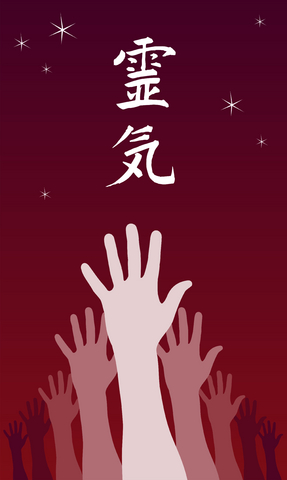Reiki is an ancient form of hands-on healing that was brought to the West from Japan in the early part of the twentieth century. The “father of modern Reiki” was Dr. Mikao Usui, and the most traditional form of Reiki today is called Usui Reiki. The history of Reiki is readily available online and is both interesting and controversial.
Pronounced “ray-key”, Reiki is a form of energy bodywork that reduces stress, induces relaxation, and promotes healing. It does this by allowing the client to tap into an unlimited supply of “ki” or “qi”, which the Chinese pronounce as “chi”. Our unseen life force energy or our “ki/qi” is what causes us to be alive.
In fact, the word, Reiki, itself means “universal life energy”, and Reiki is administered by “laying-on hands”. It is a simple and powerful technique that can be learned by anyone. It is passed from teacher to student by attunement, and it is passed from practitioner to client by laying on of hands.
Until the advent of quantum physics, no one really understood how energy workers were able to get results. Some even feared the use of supernatural forces. However, Reiki and other similar kinds of energy work like Polarity, Huna, Healing Touch, and Qigong Healing use the fields of energy that physicists have proven surround each molecule of matter. In a living being, these fields are called biofields.
The biofield is both wave and particle, like light itself, and it has many of the properties of light. It also has electromagnetic properties. It is a part of the Zero-Point Field, which is a substructure of energetic frequency that underpins the entire universe.
The Zero-Point Field also functions as a recording medium of everything, providing a means for everything to communicate with everything else. When you consider that on a subatomic level, cells and DNA also communicate through frequencies unrelated to the physical nervous system and that they also communicate directly with the Zero-Point Field, you have the basis for how Reiki works.
Indeed, researchers have shown that the human biofield communicates with all parts of the body faster than the neural network is able and that biofields of living things communicate with each other. So if your plants grow because you talk to them, or your dog knows when your car turns onto your street, it may be that your biofields are communicating!
We literally pick up frequencies in our environment, and this has been proven in the laboratory. We all have anecdotes of walking into a room and getting a bad “vibe”. That is our biofield resonating with our environment, and it’s a survival instinct which is often observed in animals who will balk at running toward an unseen danger. When we are physically ill or in pain, the biofield picks this up also. We might think of this a disharmony in the resonance pattern.

What Reiki seems to do is allow the biofield to resonate with the healing properties of the Reiki energy or ki/qi itself and to rebalance. This is called coherence. A Reiki session can bring disturbed energies in our bodies to a more harmonic state. Because our bodies strive for homeostasis, Reiki can facilitate the body’s self-healing capabilities.
According to a 2009 article National Center for Complementary and Alternative Medicine (NCCAM), “People use Reiki for relaxation, stress reduction, and symptom relief, in efforts to improve overall health and well-being. Reiki has been used by people with anxiety, chronic pain, HIV/AIDS, and other health conditions, as well as by people recovering from surgery or experiencing side effects from cancer treatments. Reiki has also been given to people who are dying (and to their families and caregivers) to help impart a sense of peace. Clients may experience a deep state of relaxation during a Reiki session. They might also feel warm, tingly, sleepy, or refreshed. Reiki appears to be generally safe, and no serious side effects have been reported.”
Researchers Susan Thrane and Susan Cohan, both at the University of Pennsylvania School of Nursing, searched forty-seven research articles to discover if Reiki had a measurable effect on pain and/or anxiety in cancer and post-surgery patients as well as seniors living in a dedicated setting. To conform to their criteria for control groups and size of study, this number was whittled down to seven studies at which they looked in depth. In all, Reiki showed evident of decreasing pain or anxiety levels over the placebo (sham Reiki) or rest alone.
Thrane and Cohan’s article, republished by The National Library of Medicine, contains excellent diagrams showing how quantum physics is being used to explain the effectiveness of Reiki and other energy modalities. They point out the similarities between device-generated electromagnetic field for wellness such as a TENs unit and human-generated biofield energy such as Reiki. They conclude that more research is needed.
Reiki is easy to integrate with massage or other modalities like Craniosacral Therapy. You can have Reiki alone and usually will be fully clothed if that is the case. It’s a great modality for someone who is a little modest about massage, and Reiki alone has many of the same benefits as massage. It’s also good for the very ill or for fibromyalgia patients for whom massage that directly manipulates the tissues would be painful or otherwise contraindicated.
Much of the early literature written about Reiki was not based on science. We are gratified that anecdotal evidence of Reki’s effectiveness is now being corroborated by controlled scientific studies in quantum physics.


